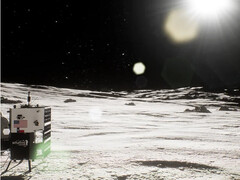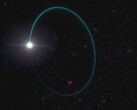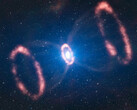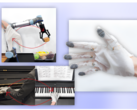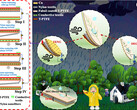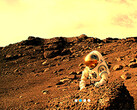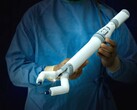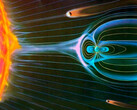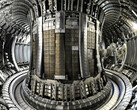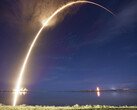Instead of astronauts with moon mobiles, golf clubs and flags to plant, NASA is now sending telescopes, radio antennas, laser measuring devices and cameras to the moon. This seems to make more sense in any case.
On February 15 at 7:00 a.m. CET, a Falcon 9 rocket set off for the moon as part of NASA's new strategy. Without any human passengers, important foundations are to be laid for future missions. And the space agency is paid handsomely to transport the instruments of other players.
On board are two telescopes that want to take full advantage of the lunar surface. There are no clouds, no disturbing atmosphere and no magnetic field. Although there are already two telescopes there, one from Apollo 16 and one from China, both only observe the ultraviolet range, which is invisible on Earth.
One of the devices, ILO-X, with an objective lens only 1.2 inches in size, which is actually far too tiny, can observe the Milky Way and its center and many other bright celestial objects with high accuracy. It would be a test run to see whether it is worth transporting a larger telescope.
In addition, there is a radio telescope, ROLSES, which can examine the magnetic fields of the Sun and Earth and their interaction from a safe distance (the Moon, Venus and Mars have no magnetic fields). The results should help to find exoplanets with their own magnetic fields many light years away. According to current understanding, life should only be possible there.
The plans for the future are already in place. A 6-miles radio telescope is to be built, which in the best-case scenario will be able to find dozens of potentially habitable planets.
A recording of the universe in the short-wave range at 30 megahertz is also to be created. Exactly this is impossible on Earth because these frequencies are reflected by the upper atmosphere - and so radio programs on shortwave can be received on half the planet.
Of course, these are currently only plans. On the way to the moon are only miniatures of the later research equipment. But compared to commercial short trips to the moon or mining on the moon, this sounds much more uplifting.


 Deutsch
Deutsch English
English Español
Español Français
Français Italiano
Italiano Nederlands
Nederlands Polski
Polski Português
Português Русский
Русский Türkçe
Türkçe Svenska
Svenska Chinese
Chinese Magyar
Magyar